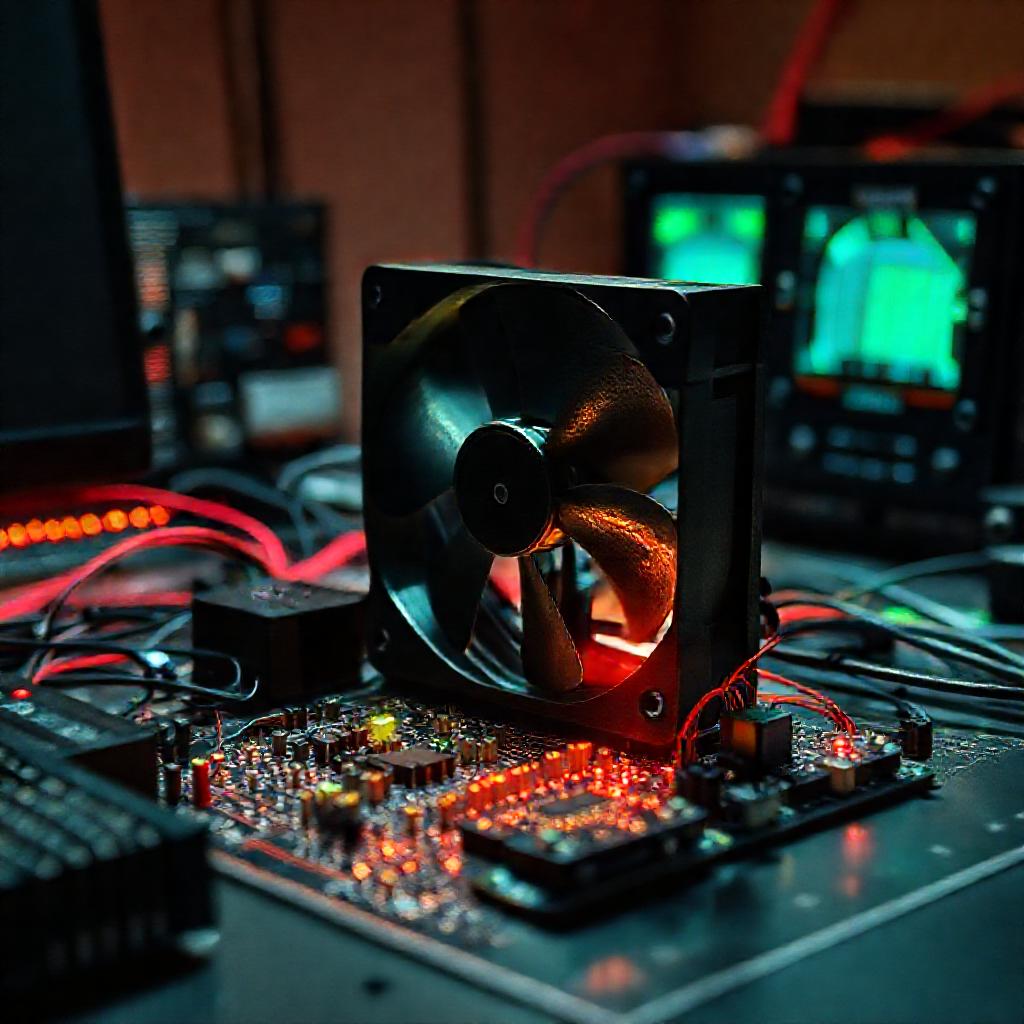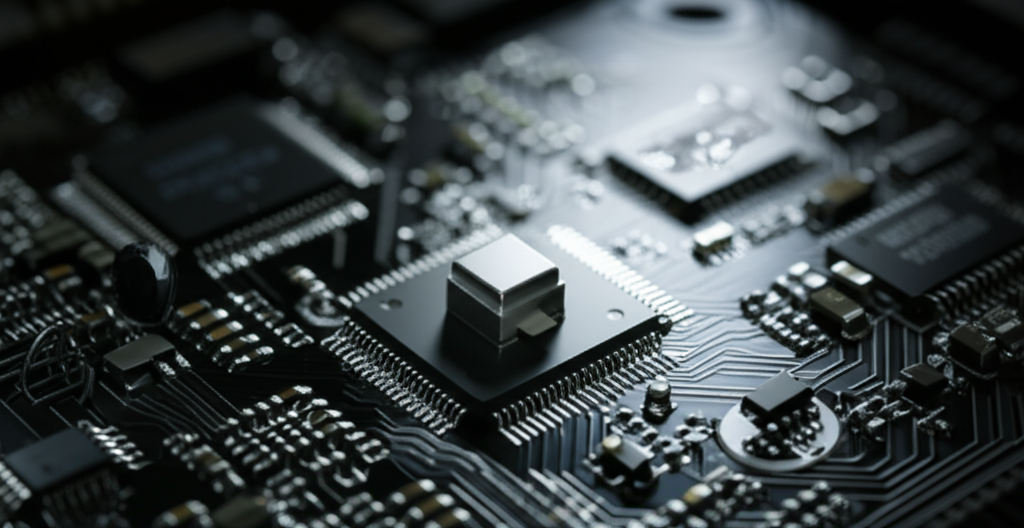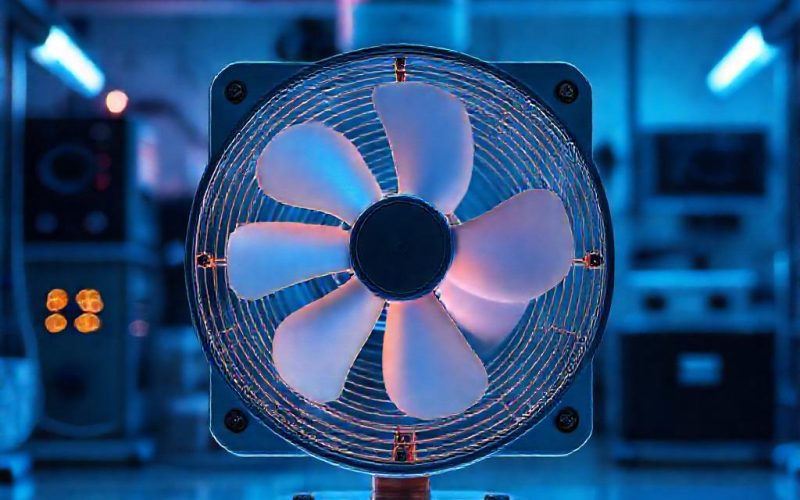Table of Contents Show
Traditional fan control systems have been a staple in buildings and homes for decades, providing a basic level of ventilation and comfort. However, these systems often lack the sophistication and efficiency needed to meet the demands of modern living and working spaces. The introduction of smart fan control systems, which utilize artificial intelligence (AI) and temperature sensors, has revolutionized the way we approach ventilation. These innovative systems offer a plethora of benefits, including energy efficiency, improved comfort and air quality, and enhanced safety features. In this comprehensive guide, we will delve into the world of smart fan control systems, exploring their definition, purpose, and advantages, as well as the crucial role of AI and temperature sensors in their operation.
I. Introduction to Smart Fan Control Systems
Smart fan control systems are designed to provide a more intelligent and adaptive approach to ventilation, leveraging the power of AI and temperature sensors to optimize fan performance and energy consumption. These systems have become an essential component of modern buildings and homes, offering a range of benefits that traditional fan control systems cannot match. By understanding how smart fan control systems work and the advantages they offer, individuals can make informed decisions about upgrading their ventilation systems and enjoying the benefits of improved comfort, energy efficiency, and safety.

II. Understanding Smart Fan Control Systems
A. Definition and Purpose
A smart fan control system is a network of devices and sensors that work together to optimize fan performance and energy consumption. The primary purpose of these systems is to provide a comfortable and healthy indoor environment while minimizing energy waste and reducing the strain on HVAC systems. Smart fan control systems achieve this by continuously monitoring temperature, humidity, and other environmental factors, adjusting fan speed and operation accordingly.
B. How Smart Fan Control Systems Work
The underlying technology behind smart fan control systems involves a combination of AI, temperature sensors, and other IoT devices. These components work together to collect and analyze data, making adjustments to fan operation in real-time. The key components of a smart fan control system include temperature sensors, which provide accurate and reliable temperature readings, and AI processing units, which analyze data and make decisions about fan operation.
C. Advantages of Smart Fan Control Systems
The advantages of smart fan control systems are numerous, including energy efficiency, improved comfort and air quality, and enhanced safety features. By optimizing fan performance and reducing energy waste, smart fan control systems can help individuals and businesses save money on their energy bills. Additionally, these systems can improve indoor air quality by providing a consistent and healthy flow of air, reducing the risk of mold, mildew, and other airborne pollutants.
III. The Role of AI in Smart Fan Control Systems
A. Predictive Maintenance
AI plays a crucial role in smart fan control systems, enabling predictive maintenance and reducing the risk of equipment failure. By analyzing data from temperature sensors and other IoT devices, AI algorithms can predict when maintenance is required, allowing individuals and businesses to schedule repairs and replacements before issues arise. This approach can help extend the lifespan of equipment, reduce downtime, and minimize the risk of costly repairs.
B. Demand Response and Load Management
AI also enables demand response and load management in smart fan control systems, optimizing energy consumption and reducing the strain on the grid. By analyzing data from temperature sensors and other IoT devices, AI algorithms can identify opportunities to reduce energy consumption, adjusting fan operation accordingly. This approach can help individuals and businesses reduce their energy bills, while also contributing to a more stable and efficient grid.
C. Personalized Comfort and Preferences
AI can also learn and adapt to individual preferences, providing personalized comfort and control in smart homes and buildings. By analyzing data from temperature sensors and other IoT devices, AI algorithms can identify patterns and preferences, adjusting fan operation to meet the unique needs of each individual. This approach can help create a more comfortable and healthy indoor environment, while also providing individuals with greater control over their surroundings.
IV. Temperature Sensors: The Backbone of Smart Fan Control Systems
A. Types of Temperature Sensors Used
Temperature sensors are a critical component of smart fan control systems, providing accurate and reliable temperature readings. There are several types of temperature sensors used in these systems, including thermistors, RTD sensors, and thermocouples. Each type of sensor has its own unique characteristics and advantages, and the choice of sensor will depend on the specific requirements of the application.
B. Placement and Calibration of Temperature Sensors
The placement and calibration of temperature sensors are critical to the accurate operation of smart fan control systems. Temperature sensors should be placed in areas where they can provide the most accurate readings, such as in the return air duct or near the fan. Regular calibration is also essential to ensure that the sensors are providing accurate readings, and to prevent drift or other issues that can affect system performance.
C. Sensor Data Analysis and Interpretation
Temperature sensor data is used to control fan operation in smart fan control systems, and AI plays a crucial role in analyzing and interpreting this data. By analyzing temperature readings and other data from IoT devices, AI algorithms can identify patterns and trends, adjusting fan operation accordingly. This approach enables smart fan control systems to optimize energy consumption, improve comfort and air quality, and provide enhanced safety features.
V. Implementing a Smart Fan Control System
A. Hardware Requirements
Implementing a smart fan control system requires a range of hardware components, including temperature sensors, AI processing units, and fan control actuators. The specific hardware requirements will depend on the size and complexity of the system, as well as the specific application and requirements. Individuals and businesses should work with a qualified installer or contractor to ensure that the system is designed and installed correctly.
B. Software and AI Model Development
The software and AI model development are critical components of a smart fan control system, enabling the system to analyze data and make decisions about fan operation. The choice of AI algorithm will depend on the specific requirements of the application, and the algorithm should be trained and tested to ensure that it is providing accurate and reliable results. Individuals and businesses should work with a qualified developer or contractor to ensure that the software and AI model are designed and implemented correctly.
C. Integration with Existing Infrastructure
Smart fan control systems can be integrated with existing infrastructure, including HVAC systems, building management systems, and smart home platforms. This integration enables individuals and businesses to leverage the benefits of smart fan control systems, while also providing a seamless and intuitive user experience. Individuals and businesses should work with a qualified installer or contractor to ensure that the system is integrated correctly and functions as intended.
VI. Case Studies: Smart Fan Control Systems in Action
A. Commercial Buildings
Smart fan control systems have been successfully implemented in a range of commercial buildings, including offices, retail spaces, and warehouses. These systems have provided significant energy savings, improved comfort and air quality, and enhanced safety features. For example, a smart fan control system installed in a large office building reduced energy consumption by 25%, while also improving indoor air quality and reducing the risk of mold and mildew.

B. Residential Homes
Smart fan control systems have also been successfully implemented in residential homes, providing improved comfort and energy efficiency. These systems have enabled homeowners to optimize fan operation, reducing energy waste and improving indoor air quality. For example, a smart fan control system installed in a single-family home reduced energy consumption by 15%, while also improving comfort and reducing the risk of mold and mildew.

C. Industrial Applications
Smart fan control systems have been successfully implemented in a range of industrial applications, including data centers, manufacturing facilities, and warehouses. These systems have provided significant energy savings, improved comfort and air quality, and enhanced safety features. For example, a smart fan control system installed in a large data center reduced energy consumption by 30%, while also improving indoor air quality and reducing the risk of equipment failure.
VII. Conclusion
In conclusion, smart fan control systems are a revolutionary technology that is transforming the way we approach ventilation in buildings and homes. By leveraging the power of AI and temperature sensors, these systems provide a range of benefits, including energy efficiency, improved comfort and air quality, and enhanced safety features. As the demand for smart fan control systems continues to grow, individuals and businesses should consider upgrading their ventilation systems to take advantage of these benefits. With the right hardware, software, and installation, smart fan control systems can provide a comfortable, healthy, and energy-efficient indoor environment, while also contributing to a more sustainable and efficient future.
VIII. FAQs
1. How much energy can I save with a smart fan control system?
The amount of energy that can be saved with a smart fan control system will depend on a range of factors, including the size and complexity of the system, the specific application and requirements, and the level of optimization achieved. However, real-world examples and case studies have shown that smart fan control systems can provide significant energy savings, ranging from 10% to 30% or more.
2. Can smart fan control systems be integrated with other smart home/building devices?
Yes, smart fan control systems can be integrated with other smart home/building devices, including HVAC systems, building management systems, and smart home platforms. This integration enables individuals and businesses to leverage the benefits of smart fan control systems, while also providing a seamless and intuitive user experience.
3. How reliable are temperature sensors, and what happens if a sensor fails?
Temperature sensors are highly reliable and durable, with a long lifespan and low maintenance requirements. However, if a sensor fails, the system can continue to operate, albeit with reduced accuracy and effectiveness. Redundancy and fail-safe mechanisms can be implemented to ensure that the system continues to function in the event of a sensor failure.
4. Are smart fan control systems suitable for all buildings and homes?
Smart fan control systems are suitable for a wide range of buildings and homes, including commercial and residential applications. However, the suitability of a smart fan control system will depend on a range of factors, including the size and complexity of the system, the specific application and requirements, and the level of optimization achieved. Individuals and businesses should consult with a qualified installer or contractor to determine whether a smart fan control system is right for their specific needs and application.
5. How do smart fan control systems compare to traditional, programmable fan controls?
Comparison table for 5. How do smart fan control systems compare to traditional, programmable fan controls?
Smart fan control systems offer a range of advantages over traditional, programmable fan controls, including improved energy efficiency, enhanced safety features, and personalized comfort and control. While traditional fan controls can provide basic functionality, smart fan control systems offer a more sophisticated and adaptive approach to ventilation, leveraging the power of AI and temperature sensors to optimize fan performance and energy consumption.




